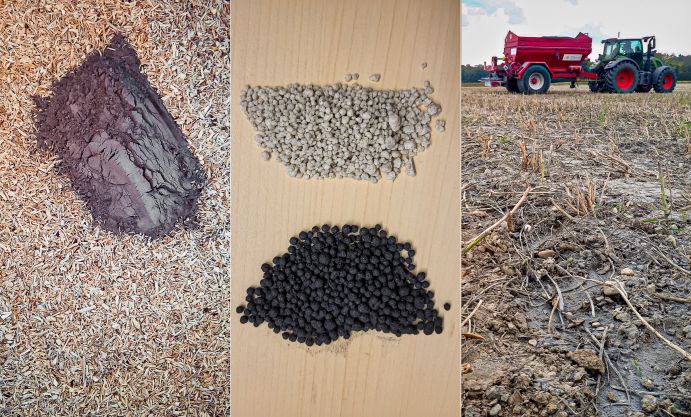Pyrogenic carbon and carbonating minerals (PyMiCCS) for enhanced plant growth and carbon capture and storage
Biochar and enhanced weathering are negative-emission technologies. The PyMiCCS project investigates how to combine biochar and rock flour and how possible positive synergy effects can be enhanced.

The production and use of biochar and enhanced rock weathering are two effective methods of removing CO2 from the atmosphere.
Biochar is produced during pyrolysis. This a process in which biomass is treated at 450 to 900 °C, excluding most of the oxygen in the air. For example, such biomass can be produced from straw, green waste, fermentation residues, dung or other unpolluted residual materials. Through the pyrolysis of these starting materials, carbon that plants have removed from the atmosphere through photosynthesis is converted into a form that is stable over the long term. In agriculture, biochar is used in a variety of ways, for instance as a carrier for nutrients. In the soil, it increases water-holding capacity and reduces nitrous oxide emissions, and in the long term it can also contribute to the buildup of soil organic matter.
During the weathering of rock, CO2 is sequestered and carbon compounds dissolved in water are formed. This process can be accelerated artificially by finely grinding the rock and exposing it to the weather on agricultural land. Nutrients are also released from the rock and soil properties are improved. The resulting solution products are transported by rivers to the ocean, where they can counteract ocean acidification.
The PyMiCCS (Pyrogenic carbon and carbonating minerals for enhanced plant growth and carbon capture and storage) project investigates whether the combined application of biochar and enhanced rock weathering has positive synergistic effects - for example, improved soil properties, increased crop yields or reduced negative environmental effects.
However, what is the most sensible way to combine the two methods? Which rock or coal type is most suitable? Are the effects greater if the rock flour is mixed with the biomass before pyrolysis, or afterwards with the biochar? The project will investigate these detailed questions over the next three years - first in the laboratory, subsequently in the field, and ultimately using ecosystem models to calculate global CO2 sequestration and soil improvement potentials.
Project management
Prof. Dr. Jens Hartmann
Institut für Geologie, Universität Hamburg
Bundesstraße 55, 20146 Hamburg
Phone: +49 40 42838 6686
Email: jens.hartmann@uni-hamburg.de
Last updated on



